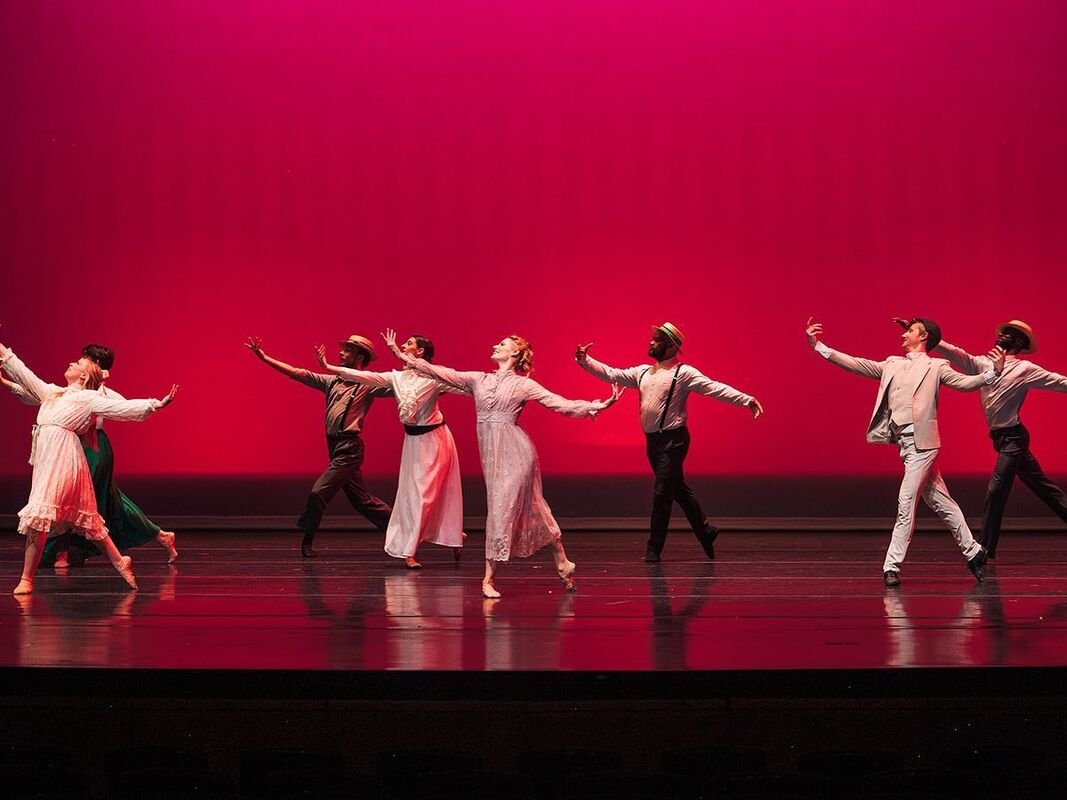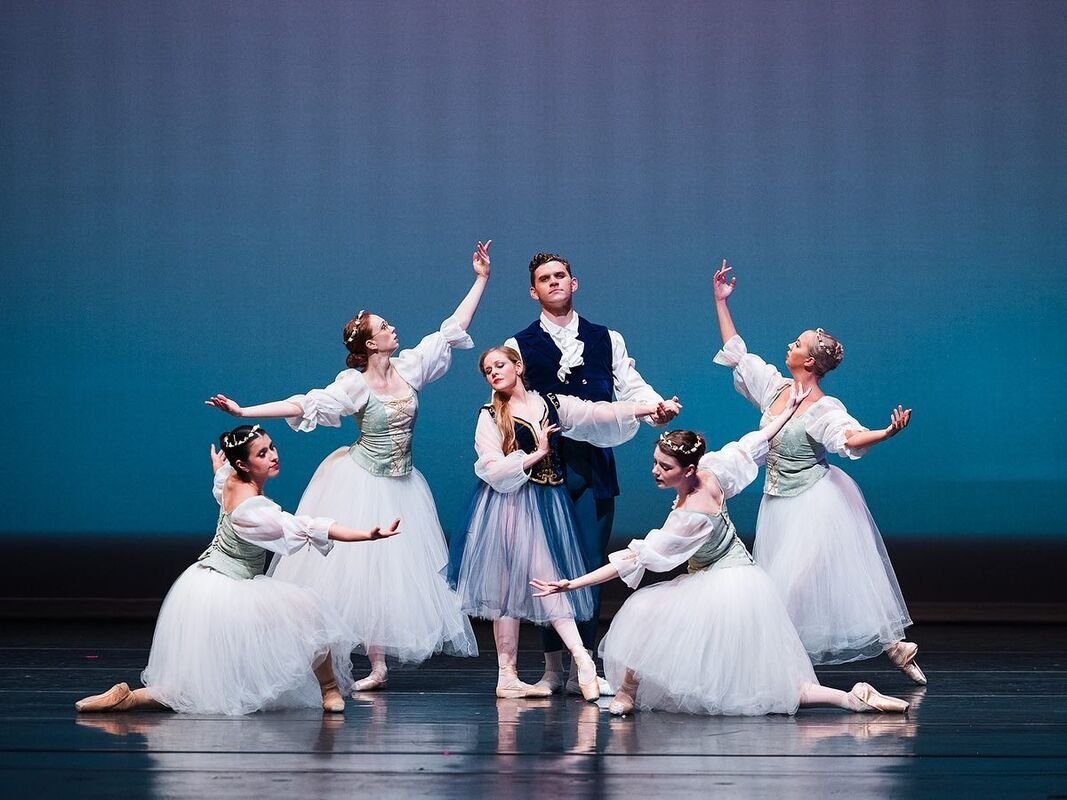HQ Review: Ballet 314’s “Ragtime: The American Experience”
Ballet 314 presented two performances of Ragtime: The American Experience at the Blanche M. Touhill Performing Arts Center on the campus of University of Missouri—St. Louis on Sunday, May 14. Robert Poe, Ballet 314’s Artistic Director, choreographed this full-length ballet based on the novel Ragtime, written by E.L Doctorow. The company had originally performed this ballet in 2021 with roughly a dozen dancers onstage. This past weekend’s performance not only showcased a cast nearly doubled in size comprised of both company members and local guest artists, but also marked Ballet 314’s performance debut at the Touhill. After both the 2:00 and 7:00 performances, the audience was invited to stay for an informal Q & A with members of the cast and the directors, which was moderated by Joanna Dee Das and Erica Hill, respectively.
Ballet 314 will be offering a streamed performance of Ragtime: The American Experience in the near future. In an attempt to avoid spoilers for those who have not yet seen this show, this review will not contain a plot synopsis.
Ragtime: The American Experience is absolutely a ballet, but perhaps not the kind of ballet that most people would first imagine if they were to describe what ballet is. The dancers exhibited their classical training in every facet of this performance with their long lines, clean turns, precise body positions, crisp footwork, obviously turned out legs, and elegant epaulment, whether they were dancing to lively ragtime music or soft classical music. However, Robert Poe’s choreography also included strong jazz and modern influences, evidenced by the dancers’ loose upper body movements, floor work, social dancing, and occasional flexed feet. The dancers also performed only in flat ballet shoes or jazz shoes, except for a brief moment in the second act during which a small group of dancers performed in pointe shoes.
Set in New York City at the turn of the 20th century, the opening scenes of Ragtime: The American Experience introduced the audience to the ballet’s main characters and its diverse people groups. The dancers’ costumes immediately distinguished who belonged to which class in society and made clear in which time period this story was taking place. The sets used throughout the ballet were minimal in nature, yet very effective; they mostly consisted of a few pieces of furniture, props, and various lighting effects projected on a blank scrim behind the dancers. The overall simplicity of the set design suited this ballet well and, whether intentional or not, gave the audience more opportunities to focus more on the story that the dancers were telling with their expressive dance movements, mimed gestures, and natural interactions with each other.
Since the beginning of civilization, countless people have relied on the arts to help them escape the pain, struggles, and cares of the world in which they live. Dance, particularly ballet, has a long history of transporting audiences to worlds they had never imagined and introducing them to characters there whom they would never encounter anywhere else. Ragtime: The American Experience does the opposite. This ballet doesn’t just expose its audiences to the harsh realities of societal injustice, police brutality, spousal abuse, death, and grief; it immerses audiences in the raw emotions from these experiences from start to finish.
No one wants to experience such circumstances in life, but in witnessing them onstage, audiences quickly come to care about the outcome of the characters’ situation. They leave the theater after this show more aware and more sensitive to the tragedies that not only the characters in this story experienced, but also countless others in the past and in the present day. People can emerge from the pain of witnessing or experiencing such tragedies stronger, wiser, and more empathetic than they were before. The world needs humanity to possess more of these traits, and Ragtime: The American Experience helps to meet that need in a powerful way while also displaying the beauty that stems from loyal friendship, standing up for what is right at great personal cost, celebrating significant milestones in life, the love of family, and changed hearts.
Photos by Lumosco Photo




